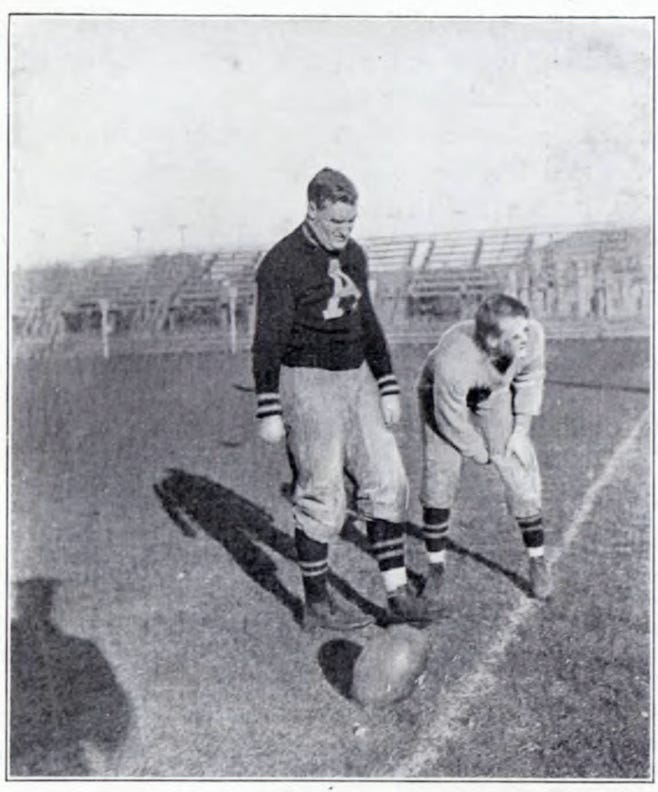Today's Tidbit… 1876 IFA Rule #2: Place Kick
This is #2 in a series covering football’s original 61 rules adopted by the Intercollegiate Football Association in 1876. One rule is reviewed each Friday.
Rule #1 defined the dropkick, and Rule #2 gave us the place kick, which came after placing the ball in a nick, the precursor of the tee.
Rule 2: A place kick, or place, is made by kicking the ball after it has been placed in a nick made in the ground for the purpose of keeping it at rest.
I assume kids playing football in the backyard or park still learn to "heel in." That is, they know how to strike the ground with the heel of their foot to create a dent or nick in the turf deep enough to hold the ball upright. ("Heeling in" will appear again when discussing the fair catch in a few weeks.)

Football had two placekicks in 1876: the kickoff and the goal after touchdown. The kickoff needs no explanation, but we can say a few words about the latter. Goals from field (field goals) occurred on scrimmage plays and were contested by the defense, so they occurred via dropkick. On the other hand, the goal after touchdown was a free kick. The defense stood behind the goal line and could not block the kick, much like when a kicker converts a try in rugby today.

Status
Placekicking grew in importance in 1896 when the center-snap-to-holder technique came along. It received another boost when the slimmer ball made dropkicking less accurate and eventually, obsolete. However, shortly before the slimmer ball came along in 1912, football borrowed the idea of the tee from golf. Like early golf tees, the football tee was originally a mound of dirt scraped from the field. The game has had an on-again, off-again relationship with tees ever since, sometimes banning and other times allowing them.
Other factors influencing the role of placekicking have included:
The reduced point value of goals, though these have been unchanged since 1912
Moving the goal posts to the end line and widening the college goal posts from 1959 through 1990
The advent of soccer-style kicking
For previous items in the series, click: Intro, Rule #1
Football Archaeology is reader-supported. Click here to buy one of my books or otherwise support the site.

